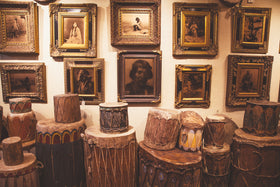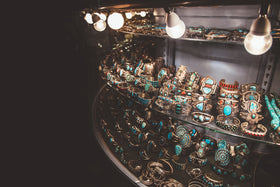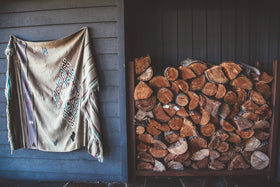Native American Crooked Knives

The crooked knife is a one-handed knife invented by the woodland Native Americans. Woodlands tribes include those in the Northeast, such as the Micmac, Penobscot, Maliseet and Passamaquoddy, as well as those in the Eastern, Central and Western Great Lakes regions, such as the Iroquois, Huron, Cree and Chippewa tribes. These tribes were canoe, sled and snowshoe builders, and the crooked knife reflects the unique needs of their craft. The tip of the blade is up-swept, so as to avoid digging into the wood while carving. The knife is held with the palm of the hand facing upward and drawn toward the carver’s chest. While this may sound dangerous, it is quite safe, as only small shavings of wood are removed at a time. 

You can tell whether a crooked knife was made for a left or right-handed carver by looking at the blade. The flat edge of the blade is always on the bottom, against the wood being carved, and the beveled edge is on top. The crooked knife gets its name not from the shape of the handle, but the shape and placement of the blade. Indians were adept at recycling materials, and often re-purposed steel from a straight razor or a file for use as a knife blade. The earliest crooked knives were composed of just a blade, which was carried and attached to a makeshift handle on the spot and secured by wrapping with wet rawhide, leather, wire or store twine.


Crooked knives were not only useful in making canoes, paddles, sleds and snowshoes, but also for whittling cups, bowls and spoons. Blades for crooked knives were made and sold by the Hudson Bay Company and other trading companies early in the fur trade days and continued to be sold into the 1940's. Although the crooked knife is still an extremely handy tool for the wood carver as well as outdoorsman, they are rarely manufactured today.

Cisco's has a large collection of antique Native American crooked knives.
Click here to view our complete collection!




